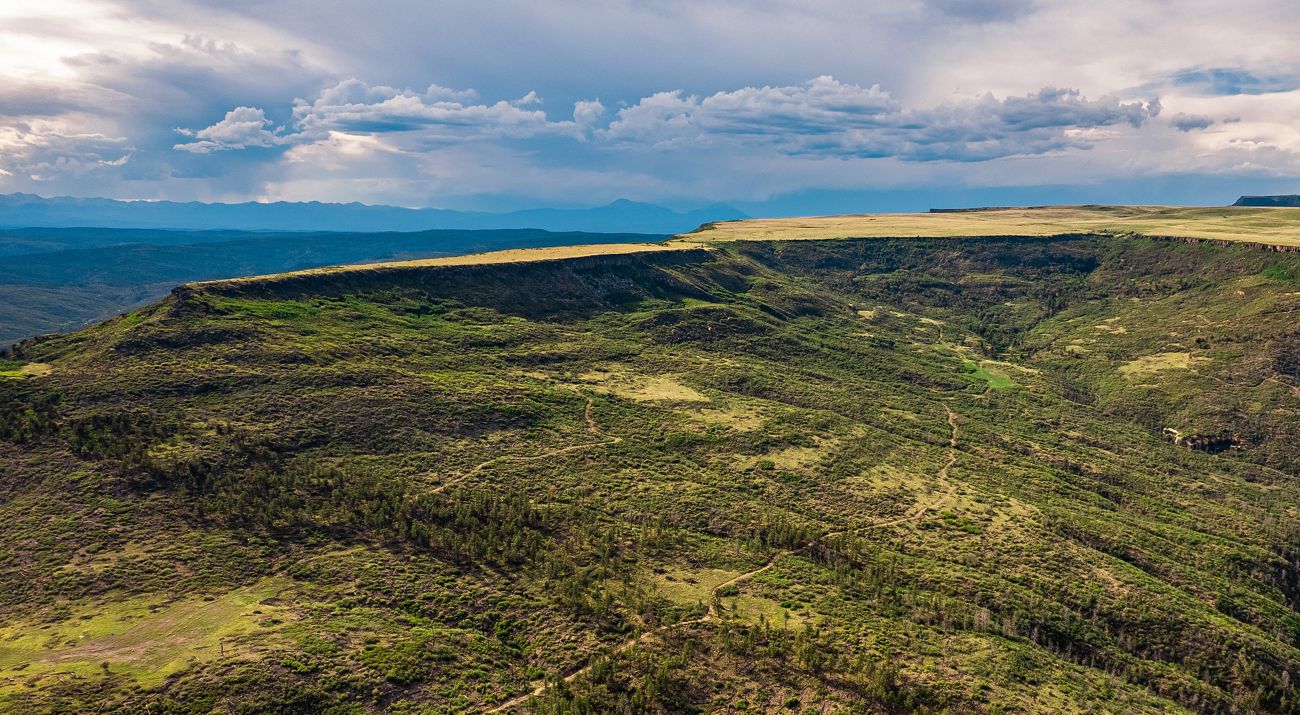Property Protects Wildlife Corridors, Supports Local Economies, Enhances Recreation
The Nature Conservancy in NM acquires property to support regional conservation effort.
Media Contacts
-
Tracey Stone
The Nature Conservancy
Phone: 602-738-1586
Email: tstone@tnc.org
If you’re lucky enough to wake up in grasslands during sunrise, you’ll hear a chorus from nature. The primordial sounds of the prairie—birds singing, crickets chirping, grasses rustling in the breeze—with a backdrop of the sun rising on the prairie horizon. It’s one of the best natural musical concerts you’ll ever experience.
However, grasslands are the least protected and most altered major habitat type on our planet. That’s why New Mexico, Colorado, Kansas, Oklahoma and Texas are collaborating to protect one million acres of intact grasslands to ensure that they may withstand the intensifying dual crises on climate and biodiversity loss through the Southern High Plains Initiative. Healthy, connected grasslands not only sustain an incredible array of wildlife, but they also secure water supplies for communities and store carbon.
Buck Ridge Ranch, located outside of Raton, New Mexico, is the latest acquisition by The Nature Conservancy in New Mexico. The 1,430-acre Buck Ridge Ranch, together with the 2022 acquisition of the adjacent Bartlett Mesa Ranch, will protect biodiversity and wildlife corridors. The hope is that these properties will one day become part of a large state park system.
Quote
Healthy, connected grasslands not only sustain an incredible array of wildlife, but they also secure water supplies for communities and store carbon.
“The purchase of these two ranches will help to establish a large block of contiguous, publicly accessible conserved land between northeast New Mexico and southeast Colorado. It will also allow us to connect the properties with Fishers Peak State Park—Colorado’s largest state park,” said Terry Sullivan, TNC in New Mexico’s director. “Cross-border parks are uncommon, and the connection could help support local economies with ecotourism dollars.”
The Buck Ridge property is critical habitat for numerous species of grassland birds and mammals. Case in point: The ranch provides a seasonal home for a locally significant herd of elk that occupies the Colorado-New Mexico cross-border region.

The Southern High Plains region includes more than 30 million acres of intact prairie grasslands, cliffs and canyons, forests and riparian corridors along rivers and streams with high natural resource value. The collaborative effort is one of the most significant large-scale private land conservation opportunities in North America.
Partnerships will power this regional collaboration. “By working closely with local communities, land trusts and others who know and depend on this land as well as reaching across borders, we’ll be able to have a greater impact,” added Bob Findling, TNC in New Mexico’s director of land conservation projects.
###
For more than four decades, The Nature Conservancy in New Mexico has established a tangible and lasting conservation legacy that spans every corner of the state. Using science and collaborating with diverse stakeholders, we are developing innovative solutions to meet the challenges of the dual biodiversity and climate crises.
The Nature Conservancy is a global conservation organization dedicated to conserving the lands and waters on which all life depends. Guided by science, we create innovative, on-the-ground solutions to our world’s toughest challenges so that nature and people can thrive together. We are tackling climate change, conserving lands, waters and oceans at an unprecedented scale, providing food and water sustainably and helping make cities more resilient. The Nature Conservancy is working to make a lasting difference around the world in 81 countries and territories (40 by direct conservation impact and 41 through partners) through a collaborative approach that engages local communities, governments, the private sector, and other partners. To learn more, visit nature.org or follow @nature_press on X.
